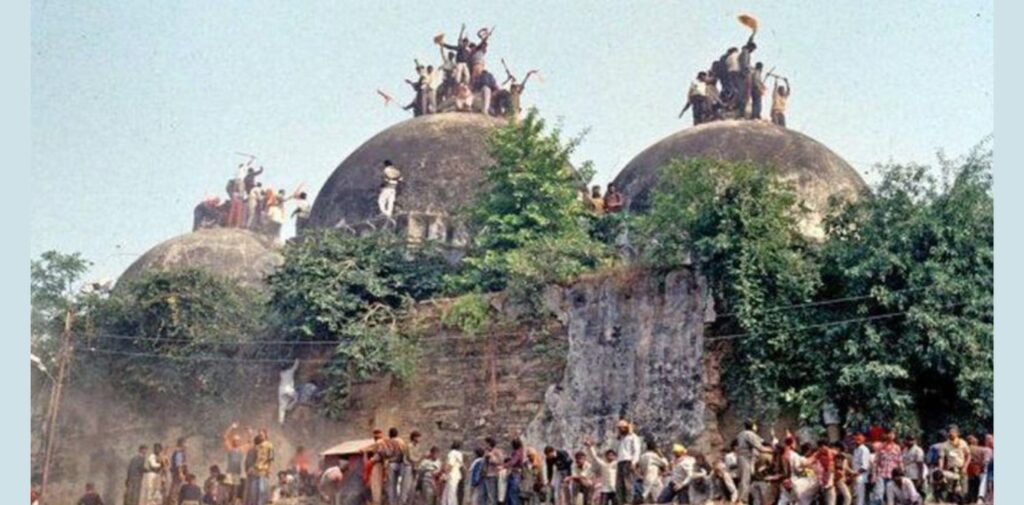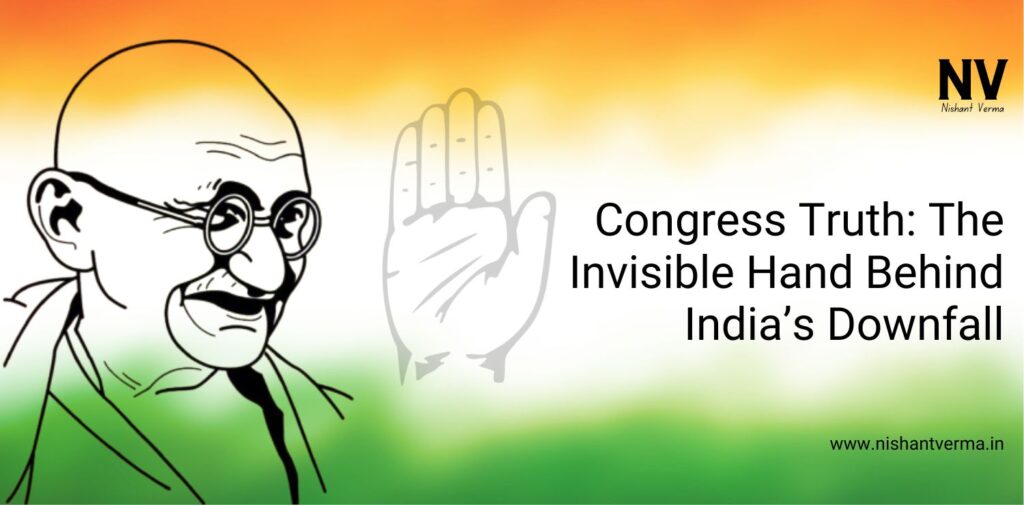The Congress party, once the dominant force in India’s politics, has been under scrutiny for its alleged role in systematically undermining the country’s traditional values, culture, and socio-political fabric. Critics argue that the party, led by the Nehru-Gandhi family, has persistently followed a policy of appeasement and favoritism that has eroded the foundation of India’s rich heritage. Many see Congress as having championed policies that prioritize minority appeasement over the welfare of the majority, potentially harming India’s progress in the long term. This article aims to shed light on these accusations and explore how party may have contributed to weakening India’s essence.
The History of Congress: A Look Back
Founded in 1885, the Indian National Congress was instrumental in leading the country to independence from British rule. It was a symbol of hope and unity for millions of Indians. However, after independence, under the leadership of Jawaharlal Nehru and later his descendants, the party gradually became a focal point of political and cultural controversy.
Nehru’s socialist policies, combined with his westernized outlook, are often cited as factors that alienated a large section of traditional Indian society. Some argue that Nehru was more concerned with building a modern India that catered to his own ideological leanings rather than preserving the nation’s cultural roots. His policies are perceived to have marginalized the Hindu community, while favoring minorities, especially Muslims, setting a precedent that was followed by his successors.

The Rise of the Gandhi-Nehru Dynasty: Power Concentration
The party quickly became synonymous with the Gandhi-Nehru family, concentrating power within the dynasty and sidelining voices of dissent. Indira Gandhi’s tenure, marked by the Emergency period (1975-1977), displayed authoritarian tendencies that hampered India’s democratic ethos. The Emergency is often seen as an attempt to suppress opposition and voices critical of the Gandhi regime.
Indira Gandhi’s policies further solidified the notion that Congress was no longer a party that represented the interests of the people but rather a tool for the family to exert control over the nation. Critics argue that she used religious and caste-based politics to secure vote banks, setting a dangerous precedent for future leaders.
A Pattern of Appeasement and Divide-and-Rule Policies
The Congress party is often accused of indulging in minority appeasement for electoral gains. This strategy, according to critics, has not only disrupted communal harmony but also eroded the trust between communities. A few examples that are frequently cited include:
- Shah Bano Case (1985): The Congress government overturned a Supreme Court ruling that granted maintenance to a divorced Muslim woman. This move was seen as an attempt to appease conservative Muslim clergy, at the cost of women’s rights and justice.
- Ram Janmabhoomi Dispute: Congress is believed to have played a dubious role in the Ayodhya dispute. While it attempted to portray a neutral stance, critics argue that the party’s indecisiveness only prolonged the conflict, further fueling communal tensions.
- Uniform Civil Code: The party’s reluctance to implement a Uniform Civil Code, despite it being a Directive Principle in the Indian Constitution, is often seen as a manifestation of its minority appeasement policy. By not advocating for a uniform set of laws applicable to all citizens irrespective of their religion, Congress is perceived to have compromised the ideal of true secularism.

Impact on Indian Culture and Traditions
One of the most significant criticisms against the party is that it has failed to preserve India’s rich cultural and traditional heritage. The party’s westernized approach under Nehru, and later leaders, is seen as an attempt to dilute the essence of what India stood for—a country deeply rooted in spirituality, philosophy, and ancient wisdom.
The education policies introduced by the Congress governments are often criticized for glorifying invaders like the Mughals and the British while downplaying the contributions of Indian kings, saints, and freedom fighters. This has, according to critics, resulted in a distorted view of India’s history, where students grow up with a sense of inferiority and a disconnect from their own heritage.
Economic Mismanagement and Corruption
While the Congress is criticized for its cultural policies, its economic track record has also been a point of contention. Nehru’s obsession with socialism led to the License Raj, a system that stifled entrepreneurship and innovation. The result was decades of stagnation, with India lagging behind other Asian economies.
Corruption scandals under Congress rule, such as the Bofors scam, Commonwealth Games scam, and the 2G scam, have further tarnished the party’s reputation. Critics argue that these incidents reflect a culture of nepotism and misuse of power, where personal gain was prioritized over national welfare.

The Role of the Media and Intellectuals: A Biased Narrative?
Many argue that Congress has managed to project itself as a pro-poor, secular party with the help of a favorable media and intellectual ecosystem. The narrative that party stands for the welfare of minorities and the downtrodden is often contrasted with the portrayal of its opponents as communal or elitist.
However, a closer analysis reveals that the Congress’s definition of secularism often translates to anti-majority rhetoric, leading to a sense of alienation among a large section of the population. This has resulted in the polarization of society and the rise of alternative political forces.
Congress’s Legacy: Where Do We Stand Today?
The Congress party’s decades-long rule has left a mixed legacy. While it is credited with several achievements like the Green Revolution and economic liberalization (under Narasimha Rao and Manmohan Singh), its failures in the cultural and political domains continue to haunt it.
The erosion of India’s traditional values, the systematic alienation of the Hindu community, and the culture of corruption are some of the criticisms that party is unable to shake off. As India stands at a crossroads today, the relevance of Congress in a rapidly changing socio-political landscape is being questioned.
Conclusion: Unmasking the Real Face of Congress
The party, once a pillar of Indian democracy, is now seen by many as a force that has consistently worked against the interests of the majority while appeasing minorities for political gains. The party’s emphasis on vote-bank politics, its failure to address cultural concerns, and its economic mismanagement have all contributed to the perception that it is an invisible force slowly destroying India from within.
Whether Congress can redeem itself and return to its roots remains to be seen. But for now, the party faces the challenge of regaining the trust of a populace that feels betrayed and alienated by decades of policies that seemingly undermined India’s cultural and traditional fabric.




